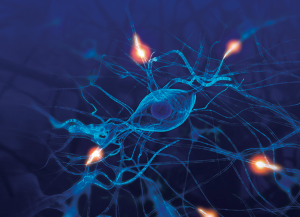New neuroimaging testing shows how prenatal exposure to organophosphate pesticides changes the development of children’s brains
 Photo Credit: Alessandra Gaioni
Photo Credit: Alessandra Gaioni
Exposure to harsh pesticides like organophosphates is linked to symptoms of neurobehavioral issues in children. New research uses neuroimaging to show how the brain physically changes with pesticide exposure. The research published in Proceedings of the National Academy of Sciences of the United States of America (PNAS) found that exposure to organophosphates (OPs) is associated with altered brain function in teenagers whose mothers were exposed to OP pesticide while pregnant. This is the first study to use neuroimaging to map brain activity associated with reduced cognitive and behavioral function in exposed children. Organophosphate (OP) pesticides are used in agriculture as a neurotoxin to control insect pests in crops. Human exposure to OPs is common in the U.S., particularly for those who live or work in rural areas where the chemicals are sprayed. The Center for the Health Assessment of Mothers and Children of Salinas (CHAMACOS) study is a long-term study that has followed CHAMACOS mothers and their children since 1999 to learn how prenatal exposure to agricultural pesticides affects childhood growth and development. During the past 20 years, the CHAMACOS study has observed associations between prenatal OP exposure and neurobehavioral outcomes that suggest organophosphates impact children’s brain structure and/or function. But these observations don’t provide much information on the physical brain structures and functions that OPs target. This study mapped brain activity using neuroimaging technology while 95 teenage participants performed tasks of cognitive flexibility, working memory, attention, social cognition, and language comprehension. The researchers correlated their brain function with the level of OP exposure their mothers received during pregnancy, and found that OPs may indeed impact cognitive function by altering the physical state and function of the brain during childhood development.


